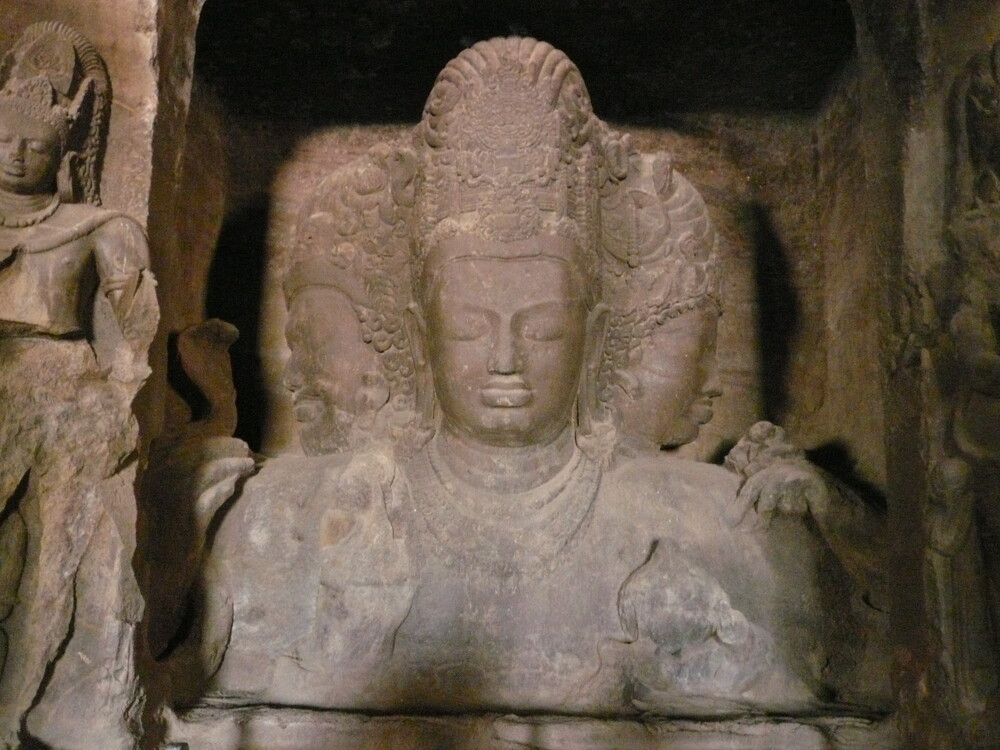Nestled on Elephanta Island, just off the coast of Mumbai, the Elephanta Caves stand as a testament to ancient art and architecture. Explore the rich history, intricate design, and the best times to visit this cultural marvel.
1. Historical Significance
Overview:
The Elephanta Caves, designated as a UNESCO World Heritage Site, date back to the 5th to 8th centuries. Carved from solid basalt rock, these caves showcase a blend of Hindu and Buddhist artistry.
2. Architectural Marvel
Sculptures and Carvings:
Marvel at the impressive sculptures depicting Hindu deities, mythological scenes, and intricate reliefs. The main cave, dedicated to Lord Shiva, features a colossal three-headed statue known as Trimurti, a masterpiece of ancient Indian sculpture.
Cave Layout:
The caves consist of a main hall and several smaller shrines. The architecture reflects the influence of the Gupta Dynasty and presents a fine example of rock-cut architecture.
3. Timings and Accessibility
Visiting Hours:
Elephanta Caves are open to visitors from 9:00 AM to 5:30 PM every day except Mondays, when they are closed for maintenance.
Accessibility:
To reach Elephanta Island, take a ferry from the Gateway of India. The ferry ride itself offers splendid views of Mumbai’s skyline, making it an integral part of the Elephanta Caves experience.
4. Best Time to Visit
Seasons:
The ideal time to visit Elephanta Caves is during the winter months, from November to February, when the weather is pleasant. Monsoons, from June to September, should be avoided due to heavy rainfall.
Time of Day:
Mornings or late afternoons are recommended for a visit to avoid the midday heat. This allows for a more comfortable exploration of the caves.
Elephanta Trimurti: The Divine Trinity of Brahma, Shiva, and Vishnu
At the heart of Elephanta Island’s artistic splendor lies the awe-inspiring Trimurti, a monumental sculpture representing the cosmic trinity of Hinduism—Brahma, Shiva, and Vishnu. Let’s unravel the significance and majesty of this divine masterpiece.

Four Heads and Four Arms:
Brahma, positioned on the right of the Trimurti, is depicted with four heads and four arms. Each head symbolizes one of the four Vedas, emphasizing Brahma’s role as the creator of the universe.
Shiva: The Destroyer and Regenerator
Three Faces:
Shiva, at the center of the Trimurti, reveals three faces. These represent the aspects of Rudra, the destroyer; Maheshwara, the great lord; and Sadashiva, the eternal benevolent. The presence of a third eye signifies wisdom and insight.
Vishnu: The Preserver
Four Arms and Serpent Adornments:
Vishnu, positioned on the left, is portrayed with four arms holding the conch, discus, mace, and lotus—symbolizing the preservation of cosmic order. Serpent adornments signify his association with the infinite cosmic ocean.
Spiritual and Artistic Significance
Divine Harmony:
The Elephanta Trimurti not only holds profound spiritual significance but also exemplifies the harmonious coexistence of the three cosmic forces. It serves as a visual and spiritual guide, inviting contemplation on the cyclical nature of existence.
Hindu Spiritual Essence of Elephanta: Shiva and Parvati
Embark on a spiritual journey as we explore the profound Hindu spiritual essence embodied in the sculptures of Shiva and Parvati on Elephanta Island. Delve into the divine narrative of love, cosmic balance, and the sacred union of the god and goddess.

Shiva: The Cosmic Dancer
Nataraja Form:
Among the captivating sculptures on Elephanta Island, Shiva takes on the mesmerizing form of Nataraja—the cosmic dancer. This iconic depiction symbolizes the rhythmic dance of creation and destruction, portraying the eternal cycles of the cosmos.
Third Eye and Matted Hair:
Shiva’s representation includes a third eye, symbolizing wisdom and perception beyond the physical realm. His matted hair signifies the untamed, primal forces of nature.
Parvati: The Divine Consort
Gentle Presence:
Parvati, the divine consort of Shiva, graces Elephanta with her gentle presence. As the embodiment of Shakti, the cosmic feminine energy, she complements Shiva’s cosmic dance with her grace and nurturing nature.
Symbolic Attributes:
Parvati is often depicted holding symbolic attributes, such as the lotus, symbolizing purity and beauty, and the trident, representing the trinity of creation, preservation, and destruction.
5. Conservation Efforts
Preservation:
Efforts have been made to preserve the Elephanta Caves, with ongoing conservation work to protect the delicate carvings and structures from environmental factors.
6. Visitor Tips
Footwear:
As a mark of respect, visitors are advised to remove their footwear before entering the main cave.
Guides:
Engaging a local guide can enhance your experience by providing insightful historical and cultural context to the intricate carvings.
In conclusion, the Elephanta Caves in Mumbai offer a journey back in time, unveiling the rich cultural and artistic heritage of ancient India. With its detailed sculptures and historical significance, it remains a must-visit destination for history enthusiasts, art lovers, and anyone seeking a glimpse into India’s glorious past.

























